Seven Great Places to Retire in Florida
The Sunshine State remains a beacon for retirees, offering warm weather, sandy beaches, a comparatively low cost of living and more. Here's a look at where to retire in Florida.

Erin Bendig
Florida has consistently ranked among the top destinations for people relocating in the United States, and 2025 seems to have taken that trend to a whole new level. More people retire to Florida each year, and today, Florida has the second-highest population of people aged 65 and older in the U.S. However, there is a growing trend of people moving out of the state as well, partly due to surging housing and property insurance costs, according to a recent report from Cotality. You'll also see this trend reflected in the drop in home prices across the state.
Florida home prices are higher than the national average, and the state’s insurance market is on shaky ground as reinsurance costs soar. On the other hand, Florida is one of the most tax-friendly states in the country for retirees. There's no state income tax if you can establish residency in Florida, and permanent residents are eligible for a homestead exemption of up to $50,000, which lowers their real estate taxes. Seniors might qualify for an additional exemption.
But Florida is a big, diverse state, too, with plenty of pleasant cities and towns on both the Atlantic and Gulf coasts, or inland (central Florida has lots of lakes, and parts are even hilly).
Worried about storms? Hurricane risk is highest in Northwest Florida, on the Panhandle, but all of Florida is vulnerable to hurricanes. The latest hurricane to hit Florida, Hurricane Milton, made landfall near Siesta Key, Florida, on October 9, 2024, as a Category 3 storm, killing at least 24 people.
While reading our choices for great Florida retirement destinations, keep in mind that many of the following cities were impacted by the storm, which caused flash flooding and wind damage. This is why Florida residents need to have adequate hurricane insurance.
These seven great Florida retirement destinations are based on locale, amenities, and access to top-notch health care. One of these spots might just be your new retirement address. Not sure if Florida is for you? Read: 10 Reasons You Don't Want to Retire in Florida.
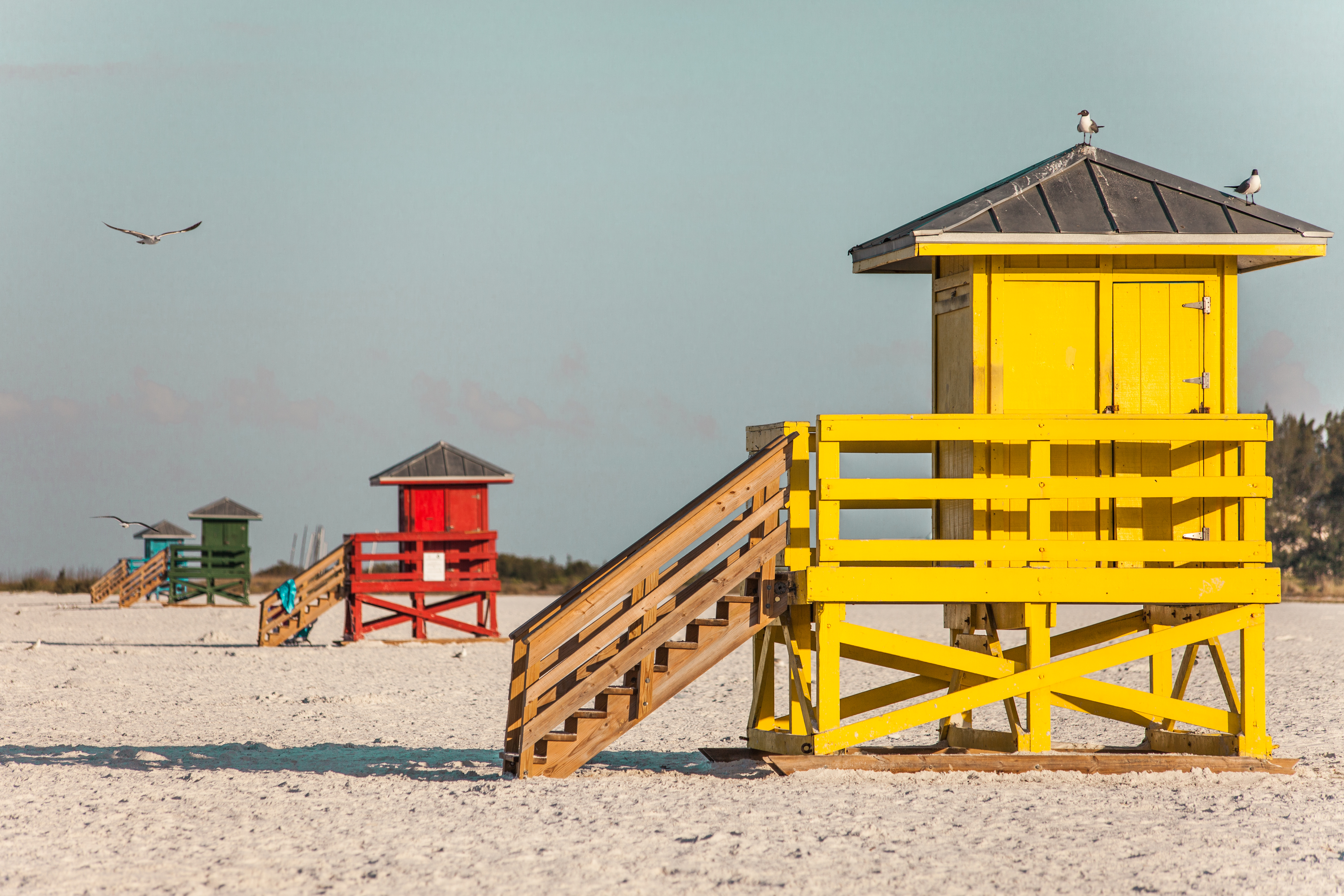
1. Sarasota
- Population: 53,786
- Share of population 65-plus: 33.4%
- Cost of living: 5.3% higher than the national average
- Median household income: $48,380
- Average home value: $411,473 (down 9.6% over the past year)
Life unfolds a bit more slowly here than in Tampa-St. Petersburg, a 50-minute drive to the north.
But Sarasota — which, like Tampa, has a colonial Spanish history — offers plenty of amenities. Those in search of the good life will find nearly 100 upscale stores and restaurants in the island shopping center of St. Armands Circle.
Residents also have the Sarasota Memorial Health Care system, one of the largest public medical centers in Florida, offering specialized expertise in heart, vascular, cancer, orthopedic, and neuroscience services.
Sarasota has miles of white-sand beaches on keys along the Gulf of Mexico. Homes a few miles inland tend to be newer and more affordable than homes along the waterfront, which can cost several million dollars.
Nature lovers will find lush landscapes and subtropical wildlife at the local parks, as well as at Celery Fields (an erstwhile celery farm now known for its birds and wetlands) and the Marie Selby Botanical Gardens.
Sarasota also has a lively and diverse arts scene, which includes a ballet company, art museums and an 80-member orchestra.
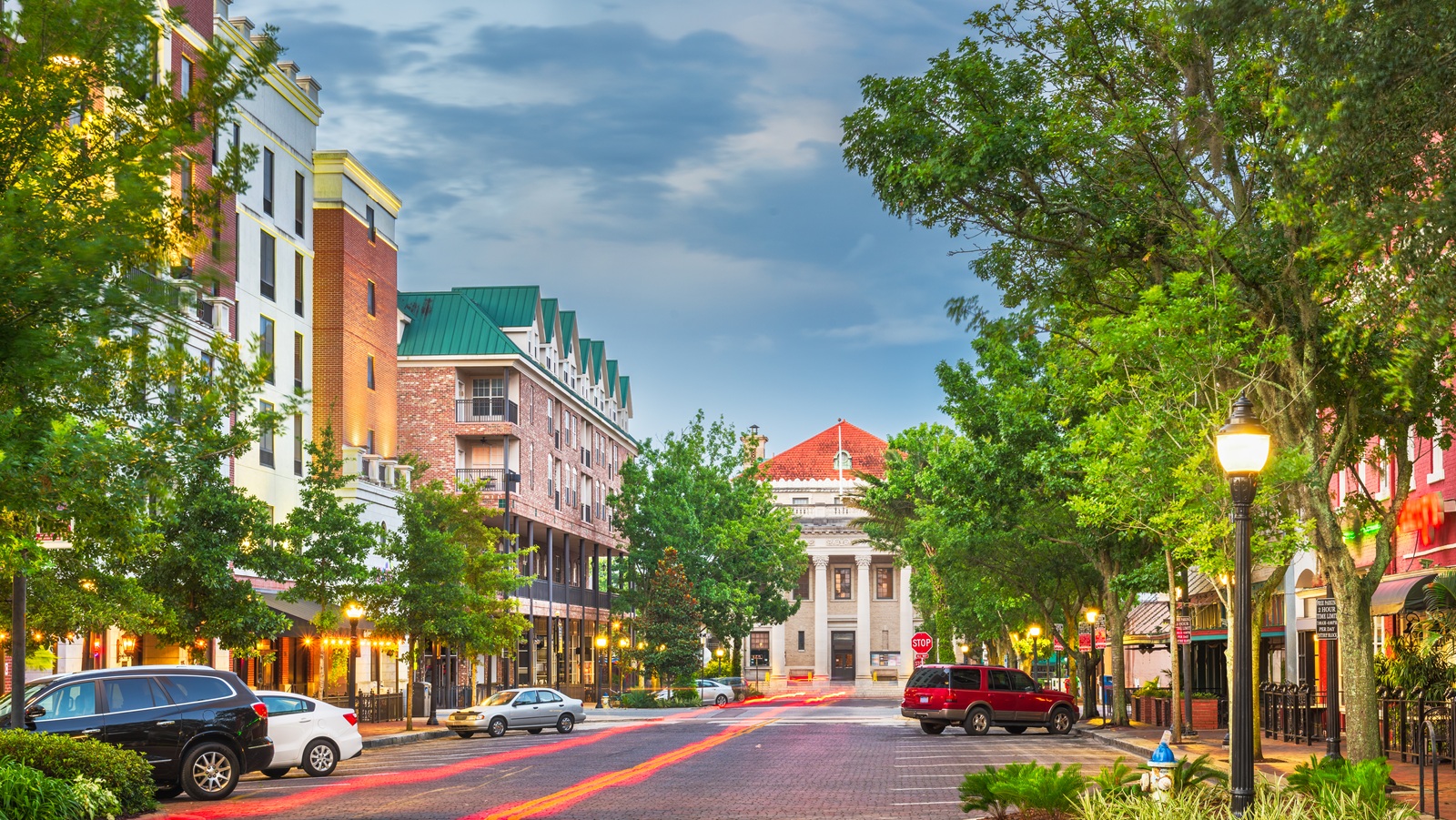
2. Gainesville
- Population: 138,733
- Share of population 65-plus: 10.3%
- Cost of living: 7.8% lower than the national average
- Median household income: $40,937
- Average home value: $295,430 (down 2.8% over the past year)
Gainesville is smack in the middle of the state, 75 miles from the coasts. But in Florida during hurricane season, that's not a bad place to live. It's the home of the University of Florida, offering many benefits for retirees looking to escape the cold winds and higher cost of living up north.
Residents age 60 and older can enroll in college courses at the university at no cost on a space-available basis. In addition, the Institute for Learning in Retirement at Oak Hammock, a retirement community affiliated with the university, offers an extensive roster of courses, many taught by university professors. (Seniors don't have to live in the community to participate).
There's Florida Gators football and basketball, too.
The city also offers more than a dozen museums and galleries in a thriving downtown.
Gainesville was founded as a health care resort. Now, medical care is available through the university's Shands Hospital and the North Florida Regional Medical Center. Plus, the Institute on Aging at the university is specifically focused on the health, independence, and quality of life of older adults.
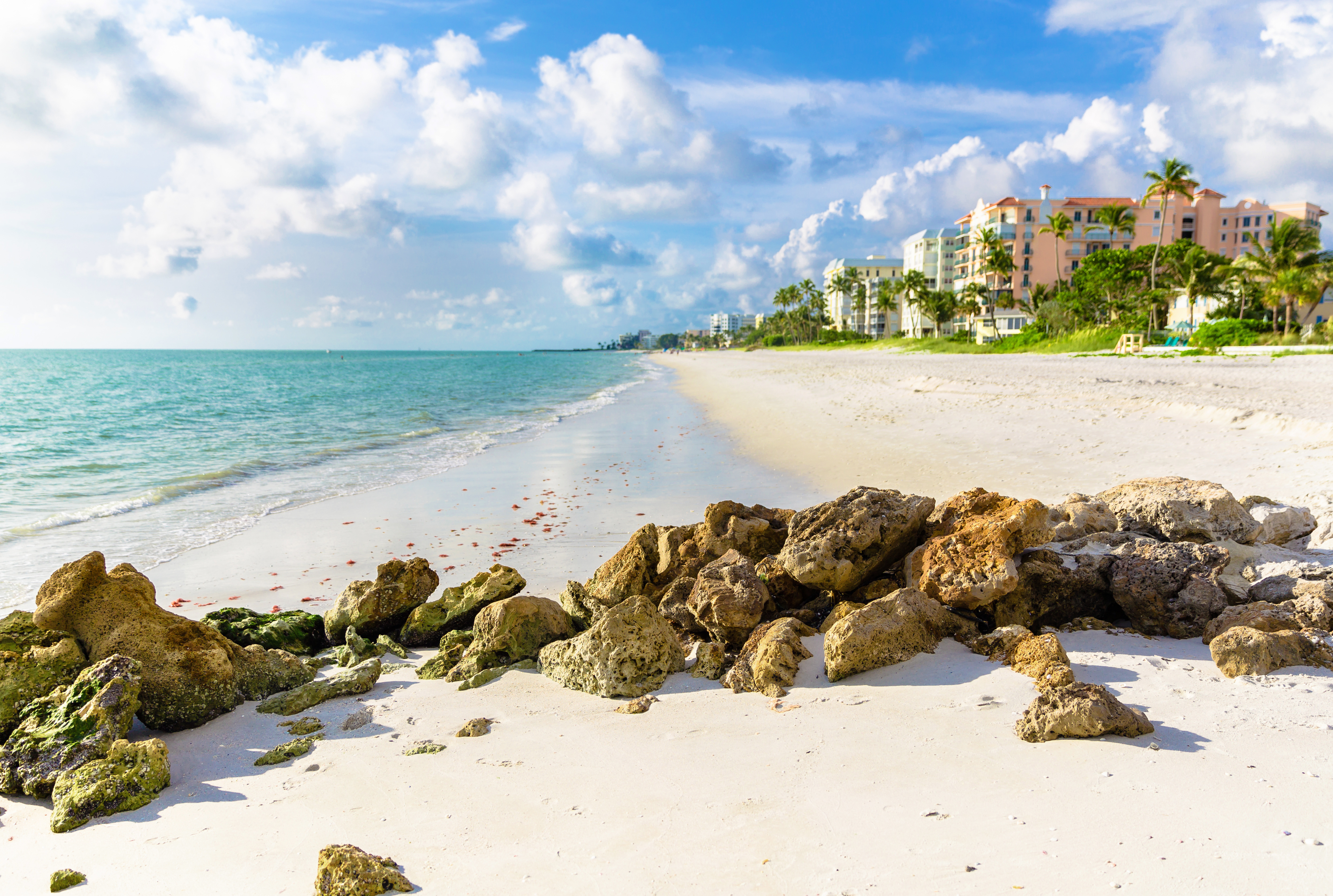
3. Naples
- Population: 19,187
- Share of population 65-plus: 52.3%
- Cost of living: 13% higher than the national average
- Median household income: $125,306
- Average home value: $549,007 (down 7.8% from one year earlier)
Naples gets a top grade as a great place to retire in Florida, which has fueled by a torrent of retirees attracted by miles of beaches, grand homes and giant banyan trees. It also ranks high for air quality from the American Lung Association.
Part of Florida's "Paradise Coast," Naples's coastline spans nearly nine miles and is home to many beautiful white sand beaches with crystal clear waters. You don't have to be retired to like living here; in fact, it's the influx of non-retirees that's raising home prices and the cost of living.
Residents do pay a premium to live the good life — particularly in Old Naples. The average price of a home is $549,007, and can jump to more than $2 million for a single-family home on the beach in Collier County. But the sky's the limit if you can afford it.
NCH Healthcare System, which operates a hospital downtown and another in north Naples, offers a range of specialties, including rehabilitation and cardiac, cancer, and geriatric care. It's a member of the well-known Mayo Clinic Care Network, which connects its doctors with Mayo Clinic specialists.
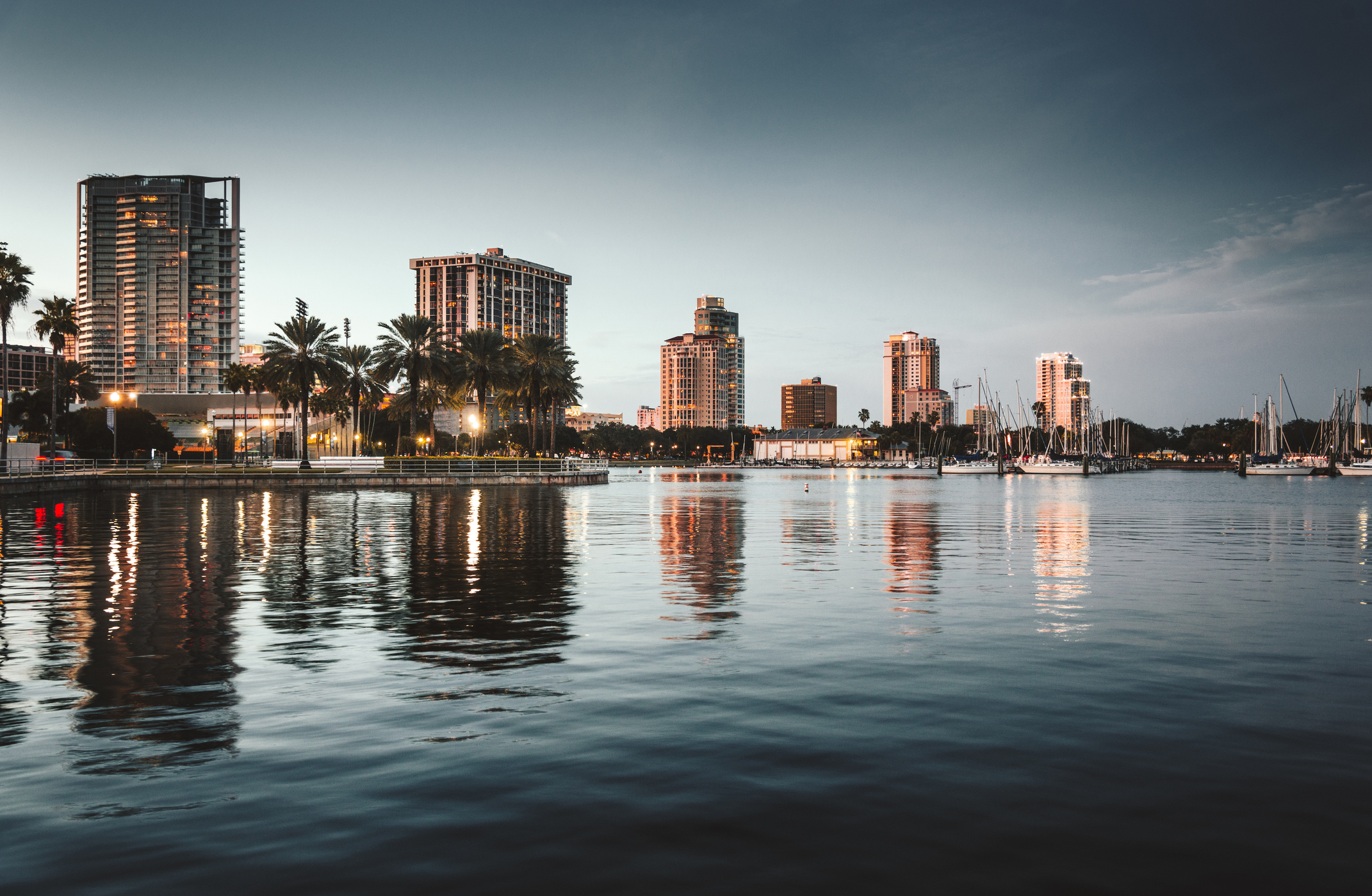
4. St. Petersburg
- Population: 258,245
- Share of population 65-plus: 19.9%
- Cost of living: 2.8% higher than the national average
- Median household income: $64,375
- Average home value: $349,236 (down 9.8% over the past year)
Home prices here range from $250,000 to $1 million (or more), with the median home priced at $349,236. Vintage neighborhoods on the northeast side of St. Petersburg, away from the water, offer a mix of bungalows, Craftsman-style cottages, large ranchers and enough Spanish-influenced design to suggest you're in the California cities of Pasadena or Santa Monica.
You can easily bike or walk to neighborhood bars and restaurants and to St. Pete's artsy downtown.
With the larger city of Tampa a half hour north on I-275, St. Pete offers more than beautiful harbor views and the Salvador Dalí museum. Residents are an easy drive away from an array of theaters, concert halls, stadiums, colleges and hospitals, without the density and congestion of Miami or the inflated real estate costs of Palm Beach and Boca Raton.
St. Pete extends 10 miles west from Tampa Bay to the Gulf of Mexico, where you can follow a 20-mile beachfront road north to Clearwater, home of the giant Morton Plant Hospital complex and the area's best-known beaches, most of which are free or have low access or parking fees.
You can also explore the area via the Pinellas Trail. Widely regarded as a standout, the trail starts in downtown St. Pete by Tropicana Field, home of the Tampa Bay Rays Major League Baseball team.

5. Punta Gorda
- Population: 20,695
- Share of population 65-plus: 52.5%
- Cost of living: 6.3% lower than the national average
- Median household income: $68,923
- Average home value: $339,112 (down 12.6% over the past year)
Punta Gorda knows how to appeal to retired folks — a majority of its population is 65 or older. Life here revolves around 55 miles of canal-front homes, as well as numerous retirement communities, restricted to people age 55 and older.
The area also offers plenty of golfing, plus a Fishermen's Village waterfront complex with 30 shops and restaurants. Also in town, the Harborwalk along Charlotte Harbor is just a portion of the 18 miles of bike trails and pedestrian pathways you can enjoy.
Although a smaller community, Punta Gorda is also home to a robust ecosystem of 600 species of birds, fish and marine wildlife, which can be seen at various wildlife centers around the city, including the Octagon Wildlife Sanctuary.
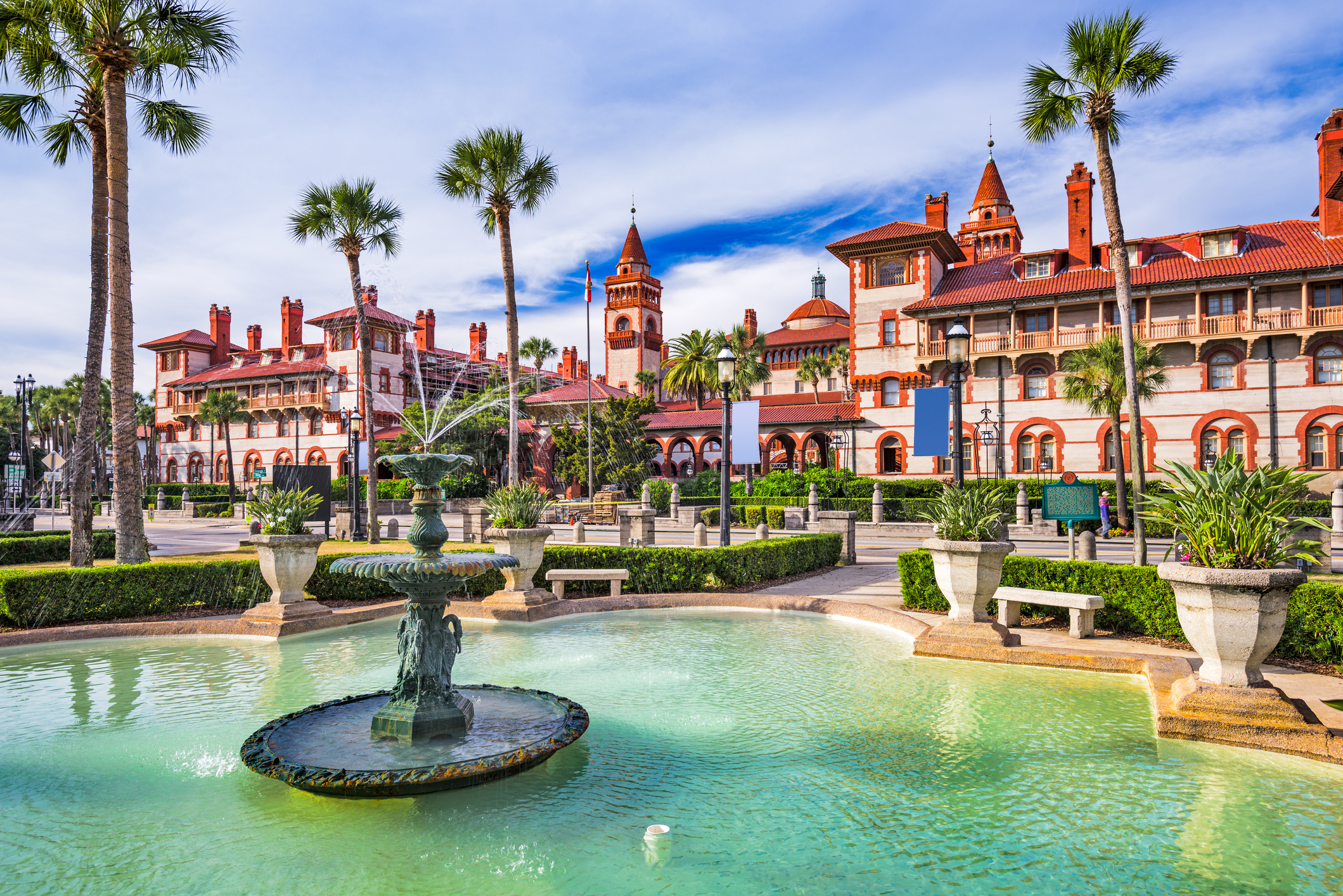
6. St. Augustine
- Population: 13,994
- Share of population 65-plus: 26.2%
- Cost of living: 10.9% higher than the national average
- Median household income: $67,269
- Average home value: $433,547 (down 3.8% from just one year ago)
St. Augustine and the surrounding St. John’s County offer more than just surf and sand. Retirees looking for fun in the sun will find it here in spades, along with plenty of cultural and historical activities, affordable luxury living, and access to first-class health care. The 42 miles of sand on St. John’s County's Atlantic coast offer something for everyone.
St. Augustine Beach, located minutes from downtown, is backstopped by laid-back restaurants serving up the day’s catch to folks in flip-flops. If a peaceful hammock is more your vibe, chill with the local wildlife on the secluded beaches at the 1,600-acre Anastasia Island State Park.
You can’t walk very far in St. Augustine without a reminder that this is the oldest European-established city in the U.S. — one that houses more than 60 historic sites and attractions, including a town square dating to 1573.
The city is still very lively. The pedestrian-only St. George Street, lined with bistros, boutiques, and bars, bustles all day and well into the night, with live music coming from practically every other open door.
Locals enjoy access to excellent health care facilities. Chief among them: the Mayo Clinic’s Jacksonville campus, a five-star hospital that’s about an hour from downtown St. Augustine.
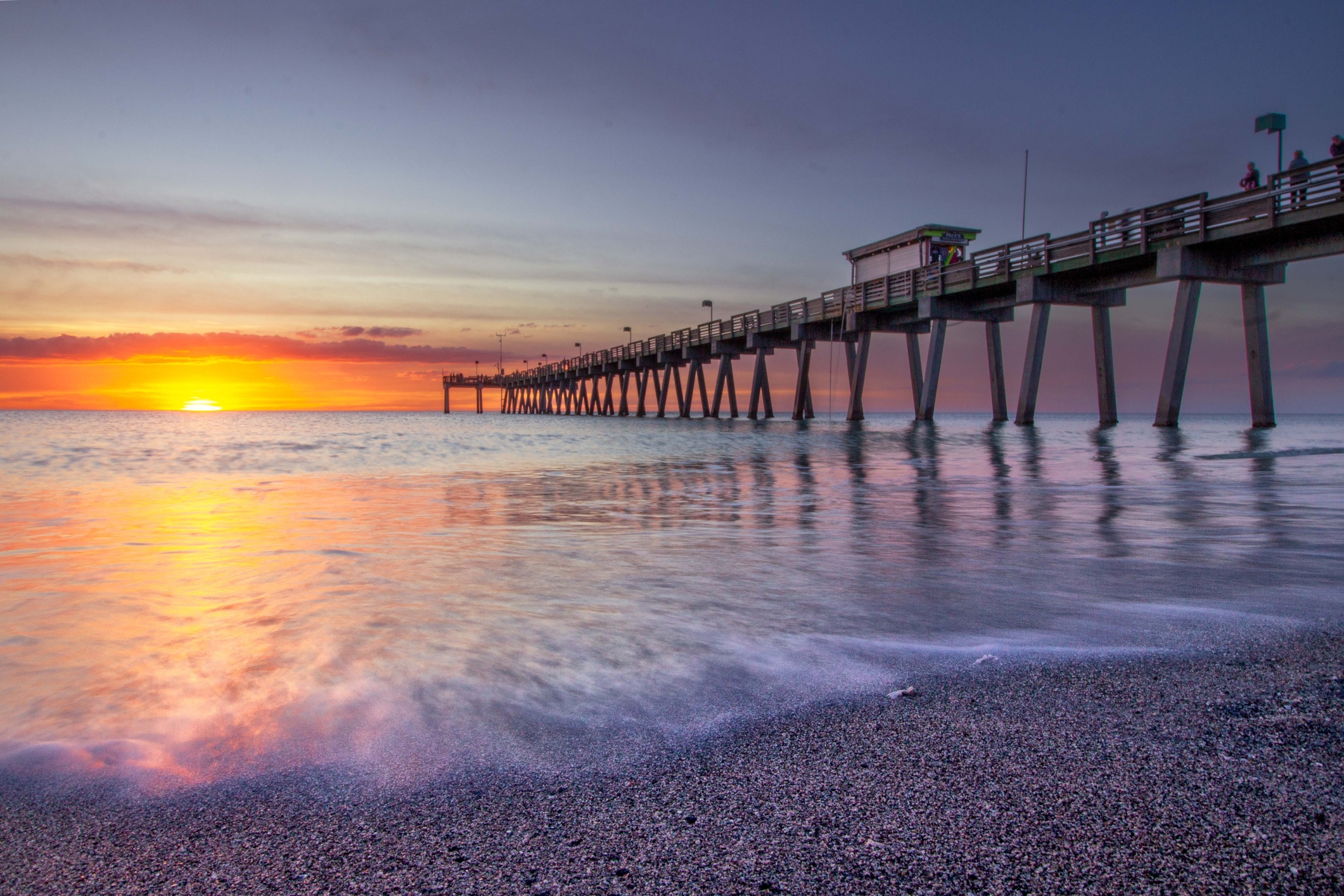
7. Venice
- Population: 29,937
- Share of population 65-plus: 61.2%
- Cost of living: 5.3% higher than the national average
- Median household income: $66,961
- Average home value: $381,378 (down 11.6% from one year ago)
Wander around Venice’s pricey historical neighborhoods and you’ll notice two things: You’re never far from the water, and there’s bound to be a park no more than a few blocks away. As you head west, the wide, palm tree-lined sidewalks give way to white sand beaches and expansive water views.
Venice has a slow pace but offers plenty of amenities. Stroll the historic district and stop in the numerous shops and restaurants. On Saturday mornings, there’s a farmers' market.
Catch a show at the Venice Theatre or a performance by the Venice Symphony at the Performing Arts Center.
Venice has more than 30 parks, including the 37,000-acre Myakka River State Park. You can kayak or paddleboard along the Intracoastal Waterway, which runs through the city. Cyclists can cruise around town or hop on the 10-plus-mile Legacy trail that extends north to Sarasota.
With all the snowbirds, rentals tend to be booked a year in advance. Expect to pay between $3,000 and $7,000 a month on the island (which is connected to the mainland by three drawbridges). Prices on the mainland are a little lower.
Population data and median household incomes from the U.S. Census Bureau. Average home values from Zillow. Cost of living data comes from BestPlaces.
Related Content
Profit and prosper with the best of Kiplinger's advice on investing, taxes, retirement, personal finance and much more. Delivered daily. Enter your email in the box and click Sign Me Up.

For the past 18+ years, Kathryn has highlighted the humanity in personal finance by shaping stories that identify the opportunities and obstacles in managing a person's finances. All the same, she’ll jump on other equally important topics if needed. Kathryn graduated with a degree in Journalism and lives in Duluth, Minnesota. She joined Kiplinger in 2023 as a contributor.
- Erin BendigPersonal Finance Writer
-
 Verizon’s 4-Line Phone Promo Offers Strong Value for Families Upgrading to Premium Devices
Verizon’s 4-Line Phone Promo Offers Strong Value for Families Upgrading to Premium DevicesFamilies can upgrade to top-tier smartphones for $25 a line with Verizon’s newest offer.
-
 Where to Store Your Cash in 2026
Where to Store Your Cash in 2026Set yourself up for success with these strategies.
-
 How Much Income You Really Need to Afford a $500,000 Home
How Much Income You Really Need to Afford a $500,000 HomeAs home prices increase, the income needed for a house is also climbing. We break down what you need to earn to afford a $500,000 home.
-
 What to Do With Your Tax Refund: 6 Ways to Bring Growth
What to Do With Your Tax Refund: 6 Ways to Bring GrowthUse your 2024 tax refund to boost short-term or long-term financial goals by putting it in one of these six places.
-
 What Does Medicare Not Cover? Eight Things You Should Know
What Does Medicare Not Cover? Eight Things You Should KnowMedicare Part A and Part B leave gaps in your healthcare coverage. But Medicare Advantage has problems, too.
-
 12 Great Places to Retire in the Midwest
12 Great Places to Retire in the MidwestPlaces to live Here are our retirement picks in the 12 midwestern states.
-
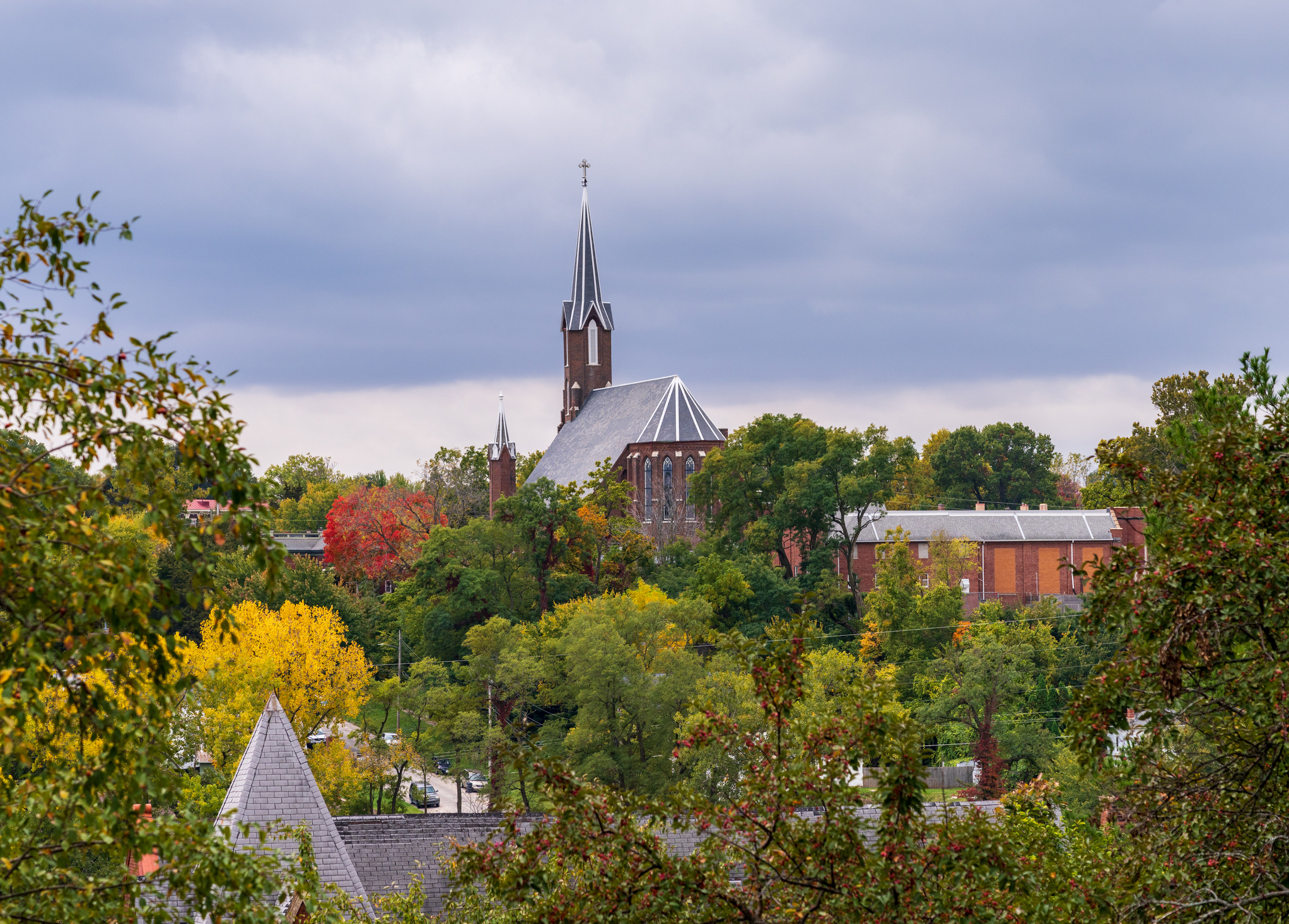 15 Cheapest Small Towns to Live In
15 Cheapest Small Towns to Live InThe cheapest small towns might not be for everyone, but their charms can make them the best places to live for plenty of folks.
-
 Best Cold Weather Places to Retire
Best Cold Weather Places to RetirePlaces to live Some like it hot; others, not so much. Here are the 12 best places to retire if you can't stand the heat.
-
 15 Reasons You'll Regret an RV in Retirement
15 Reasons You'll Regret an RV in RetirementMaking Your Money Last Here's why you might regret an RV in retirement. RV-savvy retirees talk about the downsides of spending retirement in a motorhome, travel trailer, fifth wheel, or other recreational vehicle.
-
 The 24 Cheapest Places To Retire in the US
The 24 Cheapest Places To Retire in the USWhen you're trying to balance a fixed income with an enjoyable retirement, the cost of living is a crucial factor to consider. Is your city the best?
-
 The Six Best Places to Retire in New England
The Six Best Places to Retire in New Englandplaces to live Thinking about a move to New England for retirement? Here are the best places to land for quality of life, affordability and other criteria.


